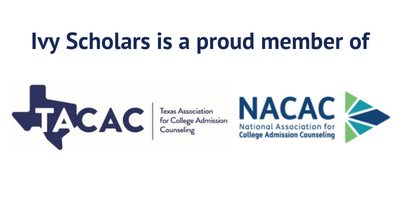Many students, especially those who are very serious about getting into college, apply early. This is increasingly popular, with more and more students deciding to apply early action or early decision each year. Of course, there are multiple ways to apply early, as we’ve discussed before. In this article, we’re going to dive a bit deeper into a question we’re asked frequently: what’s the difference between Restrictive Early Action (REA) and Early Decision (ED)?
This is an important question; many great schools offer ED admissions, but a few, notably Harvard, offer REA instead. In this article, we’re going to discuss what REA is and how it compares to ED, and then look at what acceptance rates are between schools which practice REA and ED, so you know how each might impact your own odds of acceptance. Let’s jump right in!
How does Restrictive Early Action Work?
Both Early Action and Early Decision allow you to apply to college early, and hear back early. Usually the deadline for these applications is the start of November (though this varies by school), and you get your results in December (though this again varies by school). The difference between them is commitment; when you apply Early Decision, you make a commitment to attend that school if you are admitted, and sign a document to that effect.
Early Action, on the other hand, does not bind you to attend if you are admitted; it’s just an earlier deadline. Schools tend to favor students who apply Early Decision, because they like to see that level of commitment. Everyone wants somebody who wants them, and universities are no different. If you signal to a school that they are your first choice by applying ED, then your odds of acceptance increase.
Needless to say, you can only apply to a single school ED, while you can apply to any number EA. You can’t commit to attend two schools if both admit you; there’s no good way to be in two places at once. Universities also share who has applied to them ED; applying to more than one this way will get all of your applications thrown out.
Restrictive Early Action sits at a middle point between ED and EA. Like other Early Action plans, it is nonbinding; you apply early, and if you are accepted you may choose to attend, but you are not committed to. Like ED though, you may only apply to a single school REA; that’s what the “restrictive” part of the name means.
When you are apply ED or EA, you can apply to any number of other schools EA; just like when applying regular decision. When you apply using REA, however, you sign a pledge that you will not apply to any other private colleges through Early Decision or Early Action. You may not guarantee that you will attend the school you are applying to, but they are asking for a higher level of commitment than simply applying Early Action.
Which Schools Use Restrictive Early Action?
REA is far less popular than both ED and EA, and far fewer schools make use of it. Those that do are all private universities, and are mostly quite good schools. Here is a full list of the top schools which use REA in admissions:
- Caltech
- Harvard
- Notre Dame
- Princeton
- Stanford
- Yale
Note that Princeton and Yale both offer Single Choice Early Action; this is the same thing as Restrictive Early Action, just under a different name. We don’t know why they don’t standardize names, but top colleges are often like that.
These schools do not offer Early Decision, or unrestricted Early Action. If you want to apply to them early, it has to be through their REA program.
How do REA Acceptance Rates Compare to ED?
To compare this, we’re going to look at how Early Decision acceptance rates compare to a college’s overall acceptance rate, and then do the same for Restrictive Early Action. That will give us a sense of how the two compare, and whether they are equally useful in the admissions process.
This is data from last year; we do not yet have full data from 2025. We can’t fit every college on this chart, so we’ll be looking at Ivy+ Schools specifically.
So what does this data tell us? A few useful things, the first that both REA and ED increase your odds of being admitted over applying regular decision, at least based on the data we have. This data may be flawed, but we’ll discuss that a bit later.
Next, that REA seems to provide a slightly smaller acceptance rate boost than ED. This is only a minor trend however, and the small number of data points means that you cannot draw too many conclusions. That said, it does appear that applying Early Decision is more beneficial to your chances of acceptance than applying Restrictive Early Action.
In some ways, this makes sense. Applying ED is a solid commitment to a school, and demonstrates just how much you are invested in attending. Applying REA does indicate interest, but not quite to the same extent; thus colleges do not weight it quite as heavily.
There is a final reason why colleges are more likely to care about ED than REA: yield. Yield is the percentage of students a university admits who choose to attend. A higher yield makes a university look more popular, and causes them to go up in the rankings, something which colleges care a fair bit about (even when they pretend they don’t). Because Early Decision is binding, it is a great way for colleges to improve their yield; they know that every student who they admit through this process will attend, which gives them a significant leg up here.
How Does This Affect You?
So what does all of this information mean for you? Both a lot, and not much. It is already well known that applying early is one of the best ways to increase your chances of admission. It is not a sure thing of course, but it does make your odds that much better, and in something as competitive as college admissions, every bit helps.
The question then is whether or not a school offering REA or ED should change your decision about where to apply early. This, of course, depends on you, and what you’re looking for. If there is one school in particular you favor above the rest, and it’s definitely your top choice, then you should apply to it however gives you the best chance of acceptance, be that ED or REA.
If, however, you are choosing between a few top schools, then you need to make a choice. Here’s a table to compare the pros and cons of each application method:
| Early Decision | Restrictive Early Action | |
| Pros | Major Admissions BoostCan Apply to other schools EA | Admissions boostNon-binding if you are accepted |
| Cons | Binding if you are accepted | Cannot apply to other private colleges EA |
Neither is inherently better or worse than the other; each has something to recommend it, while also offering some downsides. Both are a commitment; we advise not taking advantage of either if you are not completely certain you want to attend the college you are applying to. Like many other things in admissions, these are tools to improve your odds; they are not guarantors of acceptance, but they can help quite a bit, especially for students who are already well positioned.
Final Thoughts
Applying early to college is a tradeoff, to be sure, but it is one we encourage many of our students to pursue. On top of the advantage in admissions chances, it’s just nice to hear back from colleges in December, and then have the rest of your senior year free. You have enough to worry about already, between the stressors of school work and the general hustle and bustle of teenaged existence. Applying early shifts that work earlier, and lets you enjoy your final months of high school with significantly less stress.
We hope that this article has given you the insight you need to understand the differences between REA and ED admissions, and which one might be right for your own needs. Of course, every student and application is different, and even with the acceptance boost from applying early, top colleges are still incredibly competitive. If you are looking to talk with someone about your own applications, or for more personalized advice on what kind of application is best for you, schedule a free consultation today. We have a long experience helping students with every aspect of the admissions process, and we’re always happy to hear from you.







